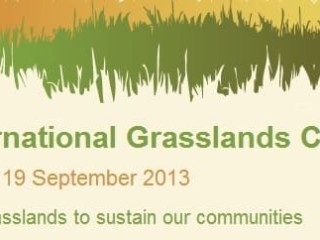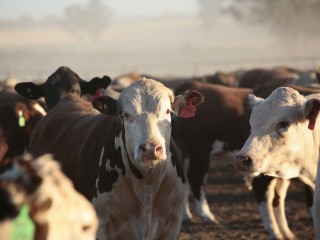 The tide has certainly turned from the days when a ‘grassfed’ descriptor on a carton lid simply meant a cheaper, less consistent, most likely tougher and generally less satisfying option than any grainfed equivalent.
The tide has certainly turned from the days when a ‘grassfed’ descriptor on a carton lid simply meant a cheaper, less consistent, most likely tougher and generally less satisfying option than any grainfed equivalent.
Rather than being a default purchase option, ‘grassfed’ today often represents its own unique value proposition to consumers, with a host of positive and attractive brand attributes.
It has arguably been the fastest growing segment of the branded beef spectrum in Australia over the past two years, in Beef Central’s opinion.
Adding to that momentum this month has been the launch of Cargill Beef Australia’s first grassfed brand, called Grasslands.
While the Grasslands brand concept has been developed under Cargill’s direction, it will undergo its effective commercial establishment phase under the new Teys-Cargill joint venture commencing on Monday (see Beef Central tomorrow for more details).
As circumstances have unfolded, the new Grasslands brand has reached the market within weeks of the Teys-Cargill joint venture being activated, but the brand is already assured of a strong future under the new merged processing entity. Just one of the possibilities is co-supply into the program under a common specification from one or more of the former Teys Bros plants.
Cargill Beef Australia marketing and brands manager Andrew Negline said his company had been sizing-up branding opportunities and value creation within its grassfed beef program over the past three years, but felt with the onset of the Global Financial Crisis that the time was not right to launch a new brand earlier.
Since about 2006, the company had had a strong focus on grainfed production and branding, driven largely by high demand out of Asia.
“But it was always our intention to build a broader range of brands, including grassfed. The GFC and the rising currency value were primary reasons why that didn’t happen earlier,” Mr Negline said.
In preparation for a move into the new brand program, Cargill went to consumer focus groups and found that the typical to Australian domestic beef consumer did not understand the difference between grain and grassfed beef, despite the fact that 75 percent of all production in Australia is grassfed.
“We put together some concepts and names for a new product and arrived at the Grasslands identity, because it ticked all the boxes in the minds of the consumers over what their expectations were for a premium grassfed product,” Mr Negline said.
Cargill was confident that it was already on the right track to deliver a high-performance premium grassfed brand: the cattle supply through its Wagga Wagga plant were predominantly British-bred, providing a solid meat quality platform to work from; and there was a good, credible story in the broader Riverina/southern NSW/northern Victoria catchment region from which those cattle came.
Opportunities also exist to build deeper supply alliances around the brand among the region’s grassfed cattle producers.
Adding further foundation to the eating quality side is MSA grading, and direct sourcing from breeders as opposed to saleyards procurement.
The Grasslands brand does not attempt to address broader ‘Natural’ beef claims covering attributes such as HGP or antibiotic use, but implant use is generally moderate across the catchment region. References are made to environmental input and minimal artificial inputs, however.
As the program grows, there is no reason why brand extension could not take place, with a ‘Grasslands Natural’ or ‘Grasslands HGP-free’ product well within the existing capability if it is deemed worthwhile. That could become part of a customer-specific sub-brand program, for example.
Tight specs protect premium status
Current specs aim to produce an AusMeat cipher YG product, accepting milk and two-tooth cattle.
At this point, carcases must achieve AusMeat marbling score 2 or better to qualify, which is a tall order off grass, by any standards. No breed requirement is applied, but the meat quality focus obviously limits supply to Angus/Hereford/Shorthorn dominant genetics.
 While it is still too early to get a realistic gauge of compliance rates, refinement of cattle management (particularly genetics and nutrition) over time should see a gradual rise, Mr Negline said. It was likely over time that the Teys-Cargill JV would conduct further MSA supplier seminars designed to fine-tune compliance performance against the Grasslands specs.
While it is still too early to get a realistic gauge of compliance rates, refinement of cattle management (particularly genetics and nutrition) over time should see a gradual rise, Mr Negline said. It was likely over time that the Teys-Cargill JV would conduct further MSA supplier seminars designed to fine-tune compliance performance against the Grasslands specs.
While current start-up throughput is still quite modest, Cargill anticipates growing to around 700 carcases weekly for the program through its Wagga plant.
Given the initial thrust is into the upper end of food service, where larger portion size is preferred in cuts like OPs and strips, Grasslands carcase weights extend out to 300kg. One YG body processed on Tuesday this week dressed 420kg, reflecting the quality of the local season this year.
As demand grows in various channels, including extension into the upper end of retail, carcase weights covering a broader weight range are likely to emerge. Lighter animals better suited to retail would obviously complement the heavier carcases employed in the restaurant and hotel sector.
Final boundaries for MSA boning groups are yet to be defined, but at this point the cut off is the same as for Cargill’s grainfed yearling cattle – boning group 7. Early kill runs for the program are averaging around boning group 3.
Currently product not hitting the marbling score 2 requirement is going into Cargill’s YG pack, which under the new Teys/Cargill joint venture is likely to be in a Teys Southern Beef box, but yet to be confirmed.
In the initial establishment stages, at least, food service has been the primary target market.
Pacific Retail Group’s popular Kingsley’s and Chop House steak restaurant network, which already has strong alliances with Cargill through its Riverine grainfed program, was the first to launch Grasslands on its menus in Sydney, Brisbane and Canberra on August 17. Since then, further inquiries have come out of South Australia, Victoria and NSW, simply by word of mouth, with little promotion up to this point.
Food bloggers drive awareness
One of the creative promotional tools used by Kingsley’s was to invite 30 of Australia’s most popular food ‘bloggers’ to attend the launch, which created a viral spread of awareness about Grasslands on the web, almost overnight. The result was a big spike in turnover through the restaurant chain over the two weeks of trading since the launch.
“That was a high-risk strategy, because if the product performance was a flop, it could have backfired badly,” Mr Negline said.
Several times prior to the launch, Pacific Retail did a lot of its own sensory testing work, pitting the Grasslands product against some of the best established grassfed brands in the country, in which it performed extremely well.
The company’s vision for the brand was not only in primal cuts, Mr Negline said.
“We see strong opportunity in value-added items bearing the Grasslands brand, and there is a lot of work going on behind the scenes to deliver on that, which is only likely to gather pace once the merger is completed,” he said.
He chose not to speculate about prospects for a Grasslands branded product appearing as a premium line in Woolworths supermarket chilled cabinets, alongside Cargill’s already successful Riverine grainfed product. “Our initial focus is elsewhere,” he said.
It’s a prospect worth contemplating, however, because with the exception of Certified Organic product, the Australian supermarket sector has not yet explored the prospects for a premium grassfed offer to customers.
Mr Negline agreed that the advent of Grasslands was very much about the changing perceptions of ‘brand grassfed’ on the domestic consumer market, with its associated connotations of healthy natural environments. “Grassfed in its best form is now considered only to be different from grainfed, not necessarily inferior,” he said.
While Cargill’s initial focus for Grasslands has been on the domestic market, there were also ‘definite opportunities’ to take a quality grassfed brand international.
“If we can provide a consistent, proven grassfed product into Asian markets, I think there are great prospects ahead,” Mr Negline said.
“Here is an opportunity to show customers in markets like Japan and Korea that grassfed does not have to mean inferior, and in fact it can stack up against the best beef in the world, of any description. It’s just a matter of breaking down those old perceptions, and consumers everywhere today want choice.”
